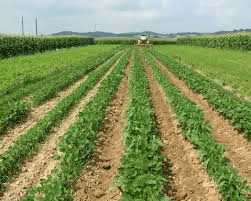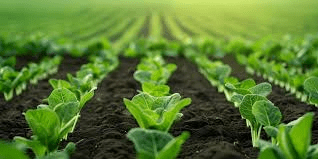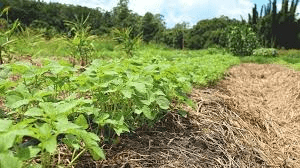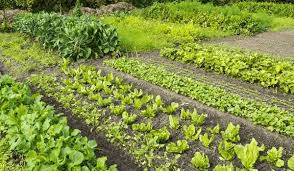Crop rotation is the practice of growing different types of crops in the same area across seasons or years. This method is not just a technique; it is a way to manage soil health, improve yields, and reduce pests and diseases.
By rotating crops, farmers can make the most of their land and create a sustainable farming system. In this article, we will explore the importance of soil fertility, how crop rotation enhances soil fertility, and the different types of crop rotation systems that farmers can implement.
Importance of Soil Fertility
Soil fertility is crucial for successful farming. Fertile soil contains essential nutrients that plants need to grow. These nutrients include nitrogen, phosphorus, potassium, and other trace minerals. Healthy soil supports strong root systems, allowing plants to absorb water and nutrients effectively. Here’s why soil fertility matters:
Nutrient Supply
1. Essential Nutrients: Fertile soil provides the necessary nutrients for plant growth. Without adequate nutrients, crops can become weak, leading to poor yields.
2. Microbial Activity: Healthy soil is teeming with beneficial microorganisms that break down organic matter and help release nutrients, improving soil fertility.
Water Retention
1. Moisture Retention: Fertile soil can hold more water, which is vital for crop growth, especially in dry periods.
2. Erosion Prevention: Well-structured soil prevents erosion, protecting the topsoil layer that is rich in nutrients.
Sustainable Agriculture
1. Long-Term Productivity: Maintaining soil fertility ensures that farmers can produce crops year after year without depleting resources.
2. Environmental Health: Healthy soil supports biodiversity and contributes to a balanced ecosystem, making agriculture more sustainable.
How Crop Rotation Improves Soil Fertility

Crop rotation enhances soil fertility through several mechanisms. By alternating crops, farmers can create a balanced environment that promotes nutrient cycling and reduces soil degradation.
Nutrient Cycling
1. Diverse Nutrient Needs: Different crops have varying nutrient requirements. For example, legumes, like beans and peas, fix nitrogen in the soil, while other crops may deplete it. By rotating crops, farmers can maintain a balance of nutrients in the soil.
2. Natural Fertilization: Legumes not only fix nitrogen but also add organic matter to the soil when their roots decompose, enriching it further.
Soil Structure Improvement
1. Root Diversity: Different crops have different root structures. Some crops, like deep-rooted plants, can break up compacted soil, improving aeration and water infiltration.
2. Organic Matter Addition: Rotating crops with cover crops or green manures adds organic matter to the soil, enhancing its structure and fertility.
Pest and Disease Control
1. Breaking Pest Cycles: Many pests and diseases are crop-specific. By rotating crops, farmers disrupt the life cycles of these pests, reducing their populations.
2. Disease Prevention: Certain crops can be more susceptible to diseases. By rotating these crops with resistant varieties, farmers can lower the risk of disease spread.
Weed Management
1. Reducing Weed Pressure: Different crops compete with different weeds. Rotating crops can help reduce weed populations by disrupting their growth patterns.
2. Utilizing Cover Crops: Planting cover crops during off-seasons can suppress weeds, improve soil fertility, and enhance overall soil health.
Read Also How to Control Feeding Struggle among Fishes in the same Pond
Types of Crop Rotation Systems

Farmers can adopt various crop rotation systems based on their specific needs, soil conditions, and available resources. Here are the main types of crop rotation systems:
1. Simple Crop Rotation
Definition: This system involves alternating two or more crops in a specific sequence, typically over one growing season.
Example: A farmer might plant corn in one season and soybeans in the next. This straightforward approach helps maintain soil fertility and reduces pest issues.
2. Complex Crop Rotation
Definition: This system involves planting several crops in a specific sequence over multiple years.
Example: A farmer may rotate corn, soybeans, wheat, and a cover crop like clover over a four-year period. This method promotes biodiversity and improves soil health through diverse nutrient management.
3. Intercropping
Definition: This method involves growing two or more crops in the same field at the same time.
Example: A farmer could plant corn with beans. The corn provides shade for the beans, while the beans fix nitrogen, benefiting both crops. Intercropping maximizes land use and increases biodiversity.
4. Relay Cropping
Definition: This system involves planting a second crop before the first crop is harvested.
Example: A farmer might plant oats and then add beans when the oats are still growing. This technique optimizes the growing season and can enhance soil fertility through diverse root systems.
5. Cover Cropping
Definition: This practice involves planting crops primarily for soil improvement rather than for harvest.
Example: Farmers might grow rye or clover during the off-season. These crops protect the soil from erosion, add organic matter, and improve fertility when turned into the soil.
Benefits of Crop Rotation on Soil Health
Crop rotation offers numerous advantages for soil health, promoting sustainable agricultural practices. Here are some key benefits:
Nutrient Management
1. Balanced Nutrient Supply: Different crops have varying nutrient needs. By rotating crops, farmers can naturally replenish essential nutrients in the soil, avoiding depletion.
2. Nitrogen Fixation: Leguminous crops, such as beans and peas, can fix atmospheric nitrogen into the soil, enriching it for subsequent crops.
Soil Structure Improvement
1. Enhanced Aeration: Different root systems help break up compacted soil, improving its structure and allowing better air and water movement.
2. Organic Matter Addition: Rotating crops with cover crops or green manures adds organic matter, enhancing soil structure and moisture retention.
Pest and Disease Reduction
1. Disruption of Pest Life Cycles: Rotating crops interrupts the life cycles of specific pests, reducing their populations and the need for chemical treatments.
2. Disease Management: Different crops can have varying resistance to diseases, helping to minimize the risk of crop-specific diseases.
Weed Control
1. Reduced Weed Competition: Changing crops disrupts the growth patterns of weeds, making it harder for them to establish themselves.
2. Cover Crop Benefits: Planting cover crops can suppress weed growth and improve soil fertility during off-seasons.
Biodiversity Enhancement
1. Increased Soil Microbial Diversity: Different crops support various beneficial microorganisms, improving overall soil health.
2. Habitat Creation: Diverse crop rotations can provide habitats for beneficial insects and wildlife, promoting ecosystem health.
Read Also Complete Guide on Treatment of Livestock Diseases
Challenges in Implementing Crop Rotation

While crop rotation has many benefits, it also presents certain challenges:
Knowledge and Experience
1. Lack of Understanding: Many farmers may lack knowledge about effective crop rotation practices, making it difficult to implement.
2. Training Needs: Educating farmers on crop selection and rotation strategies requires time and resources.
Crop Selection
1. Choosing Compatible Crops: Not all crops are suitable for rotation. Selecting the right combination can be challenging, especially in small-scale operations.
2. Market Demand: Farmers may be reluctant to rotate if they are unsure about market demand for certain crops.
Resource Limitations
1. Financial Constraints: Implementing crop rotation may require investments in new seeds, equipment, or infrastructure that some farmers may not afford.
2. Labor Requirements: Additional planning and labor for managing different crops can be a barrier for some farms.
Environmental Factors
1. Weather Variability: Unpredictable weather patterns can affect crop success, making rotation strategies less effective in certain seasons.
2. Soil Type Differences: Not all soils support diverse cropping systems equally, and some areas may face specific limitations.
Best Practices for Effective Crop Rotation
To maximize the benefits of crop rotation, consider these best practices:
Plan Ahead
1. Develop a Rotation Schedule: Create a long-term crop rotation plan that outlines what crops will be planted over several seasons.
2. Include Cover Crops: Incorporate cover crops into your rotation to enhance soil health during off-seasons.
Choose Diverse Crops
1. Utilize Crop Families: Select crops from different families to avoid depleting the same nutrients and to disrupt pest cycles effectively.
2. Incorporate Legumes: Include nitrogen-fixing legumes in your rotation to naturally enhance soil fertility.
Monitor Soil Health
1. Conduct Regular Soil Tests: Regularly test soil to assess nutrient levels and make informed decisions about crop selection and amendments.
2. Observe Crop Performance: Monitor how different crops perform under your rotation system and adjust as necessary.
Implement Integrated Practices
1. Combine with Other Practices: Integrate crop rotation with other sustainable practices like cover cropping, reduced tillage, and organic amendments for better results.
2. Utilize Pest Monitoring: Combine crop rotation with pest monitoring to address pest issues promptly and effectively.
Educate and Collaborate
1. Seek Education: Attend workshops and training sessions to enhance your knowledge of crop rotation practices.
2. Collaborate with Peers: Engage with other farmers to share experiences and learn from each other’s successes and challenges.
Crop rotation is a valuable practice that enhances soil health, improves nutrient management, and promotes sustainable farming. Despite the challenges of implementation, following best practices can lead to significant benefits.
By planning ahead, choosing diverse crops, and monitoring soil health, farmers can create a robust cropping system that supports long-term productivity and environmental health.
With dedication and informed decision-making, crop rotation can become an integral part of a successful farming strategy.
Read Also Underground Water and Aquifers






